Terebratalia transversa (Sowerby, 1846)Common lamp shell , transverse lamp shell, scalloped lamp shell |
|
| Synonyms: Terebratalia caurina | |
| Phylum Brachiopoda
Class Articulata Order Telotremata |
|
| Terebratalia transversa photo taken at Rosario beach Marine Laboratory | |
| Photo by: Anna Dyer, 08/02/02 | |
How to Distinguish from Similar Species: Distinguished by location, color, and the fact that it is broader than long. No other brachiopod or clam in this region has such strong undulations in the anterior opening between the valves.
Note: Unlike in clams, the two valves of a brachiopod are dorsal and ventral. In this species the dorsal valve is smaller and underneath, while the ventral valve is larger, has the opening for the pedicle, and is on top so the animal normally lives "upside-down". The hinge is the posterior end of the animal and the opening is anterior.
Geographical Range: Alaska to Baja California.
Depth Range: It is found in the low intertidal zone but is more commonly subtidal to at least a depth of 1,800 m in clean, quiet water.
Habitat: This species, when found, is usually attached to undersides or protected surfaces of large rocks.
Biology/Natural
History: The animal
is solitary. When it reproduces (in winter), the fertilized
eggs
develop into a characteristic 3-lobed and ciliated planktonic larva
somewhat
like a trochophore. The larva does not feed
(lecithotrophic).
The larva attaches and then develops into an adult. Predators
of
this species include crabs, which chip off parts of the margin of the
shell
to reach the soft parts, and the seastars Evasterias
troschelii and Orthasterias
koehleri. The lampshell may survive crab attacks
and many show
asymmetrical shell growth from repairs that have been made.
| Return to: | |||
| Main Page | Alphabetic Index | Systematic Index | Glossary |
References:
Dichotomous Keys:
Carlton,
2007
Kozloff
,1987, 1996
General References:
Lamb
and Hanby, 2005
Morris
et al., 1980
O'Clair
and O'Clair, 1998
Scientific
Articles:
General Notes/Observations:
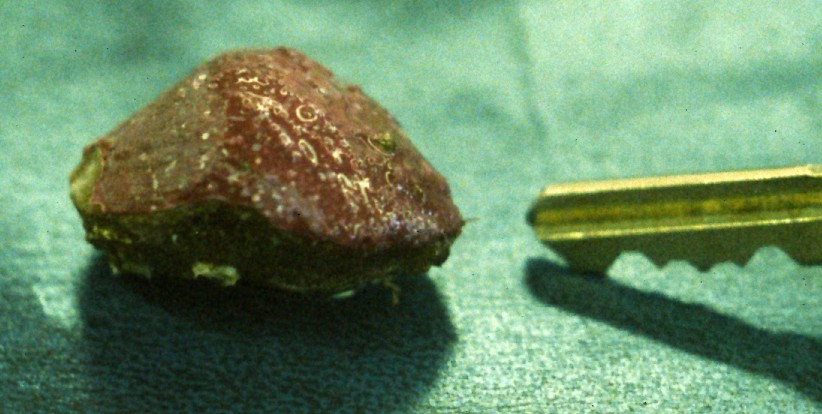
This species is often encrusted with coralline algae. Photo
by
Dave Cowles, July 2000

This individual has unusually pronounced growth lines. Shell
found dead at 12 m depth near many live individuals off the Cone
Islands
by Jim Ramaglia, and provided by Andrew Rice. Photo by Dave
Cowles,
July 2005.
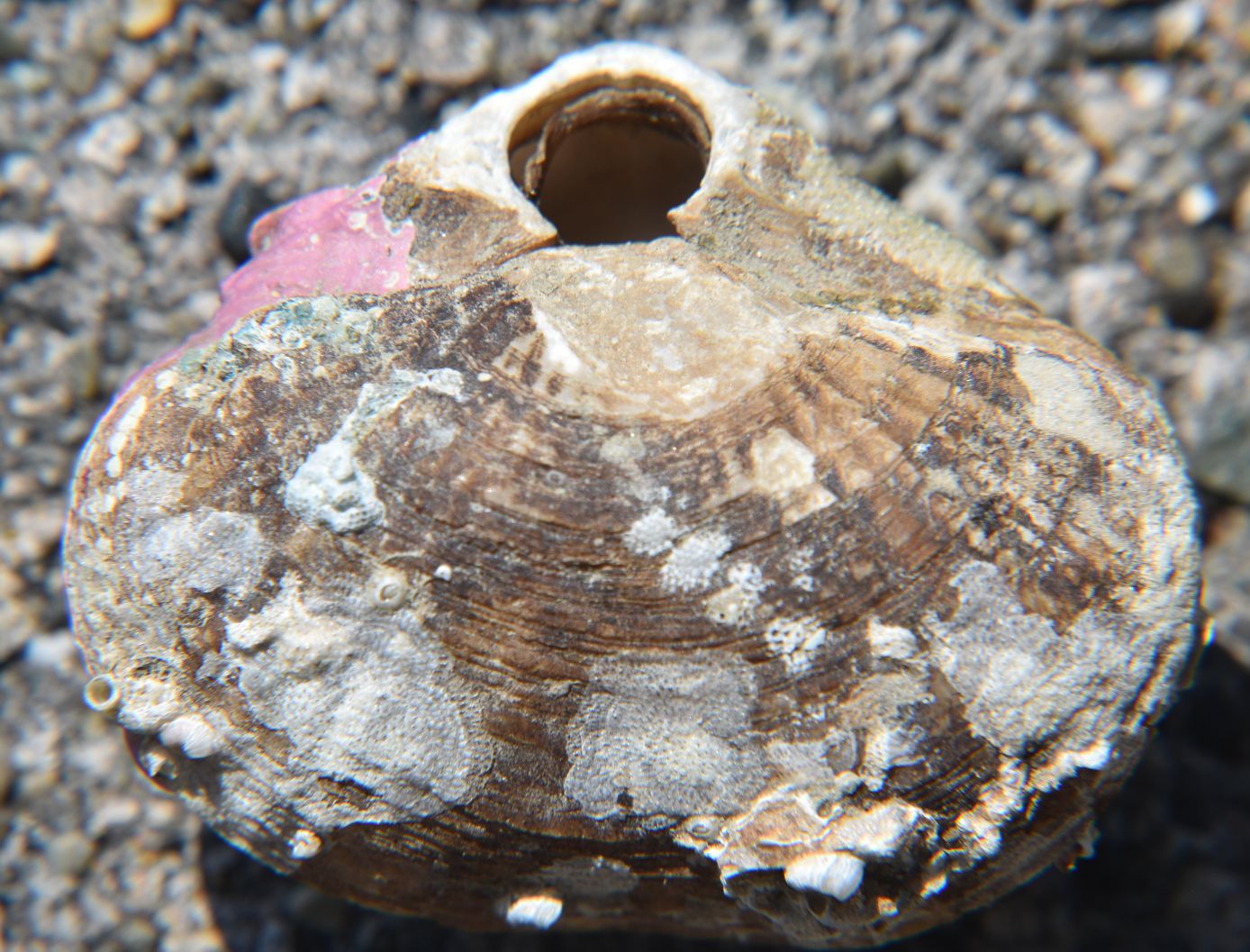
This view of the under (dorsal) side of the animal shows the dorsal
valve. At the top of the photo is the ventral (upper) valve with the
hole
from which the pedicle exits at the posterior end of the valve. The
fleshy
pedicle attaches to a rock, and the side shown here would be oriented
downward
in life. Note that the opening for the pedicle is at the very posterior
end of the valve and the posterior end is not pointed. Photo of a 4.2
cm-wide
individual by Dave Cowles, August 2020.
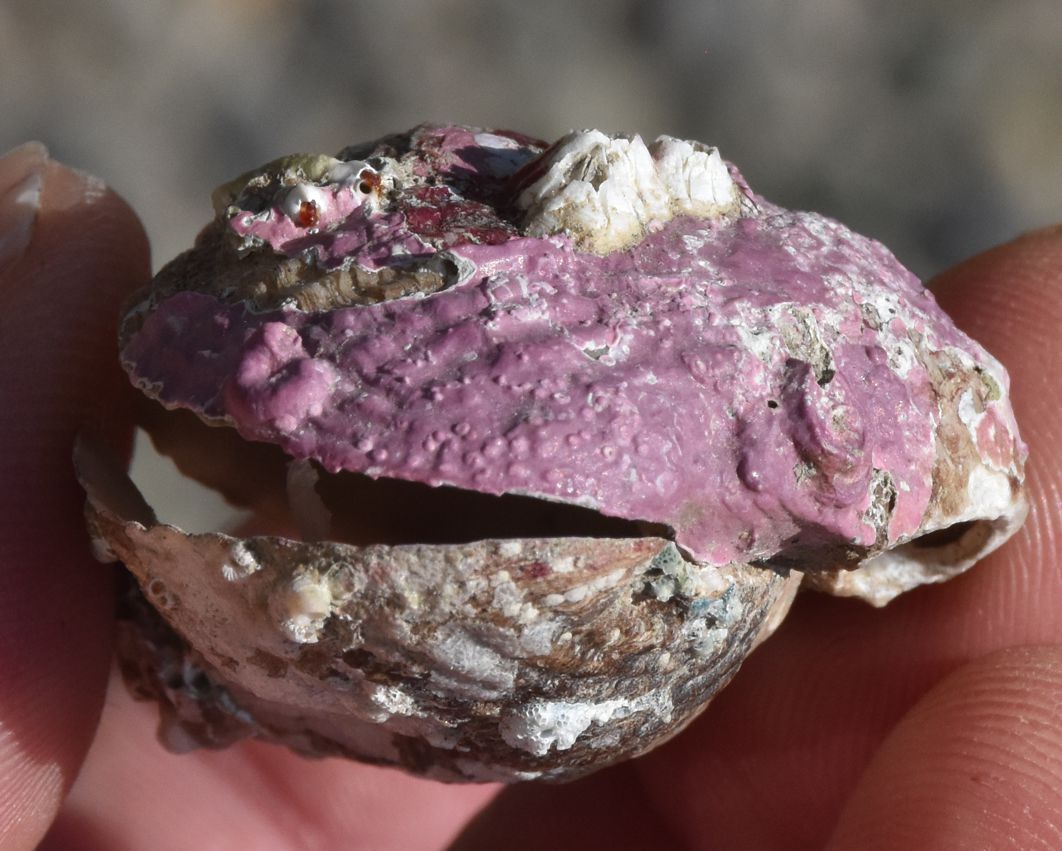
This is the normal orientation of the animal in life. The dorsal valve
is down, and the larger ventral valve is up. The fleshy pedicle
protrudes
through the opening in the ventral valve seen on the right and attaches
to a rock. Anterior is to the left and posterior to the right. Note
that
the ventral valve, which is on top and thus would receive more light,
is
encrusted with coralline algae in this photo while the corsal valve on
the bottom is not. Photo of the same individual as shown for the dorsal
valve above by Dave Cowles, August 2020.
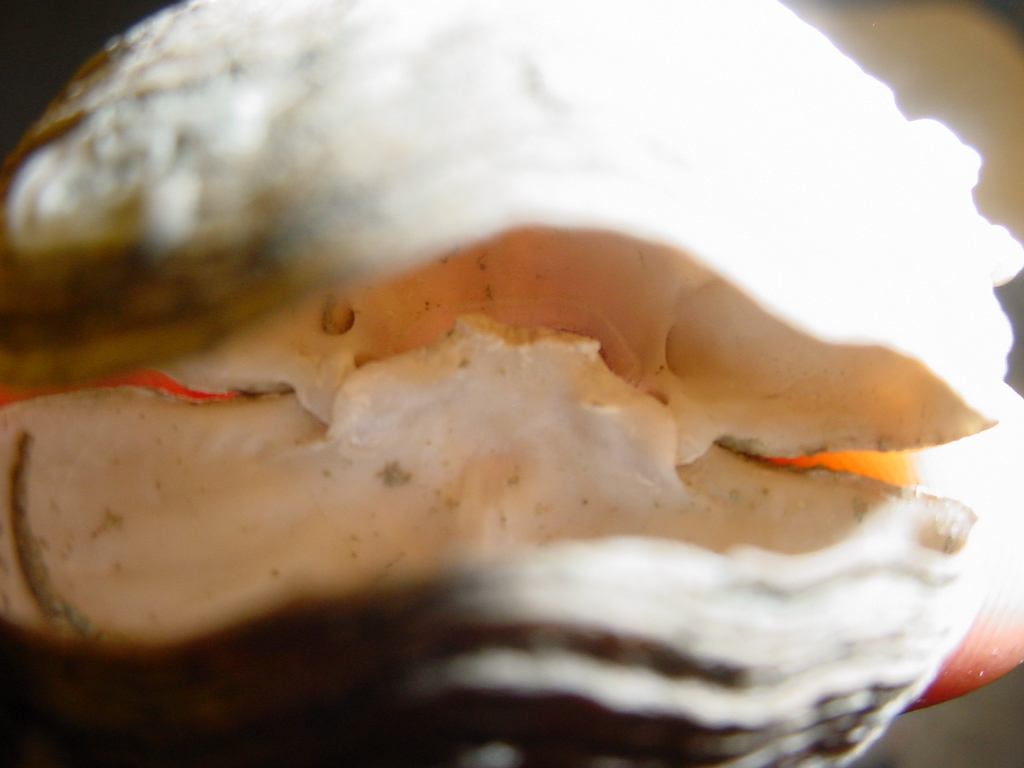
This photo shows the hinge articulation. The two valves are
interlocking
so that they cannot be opened more than in the picture without
breaking.
The fragile brachidium has already broken off in this individual. Photo
by Dave Cowles
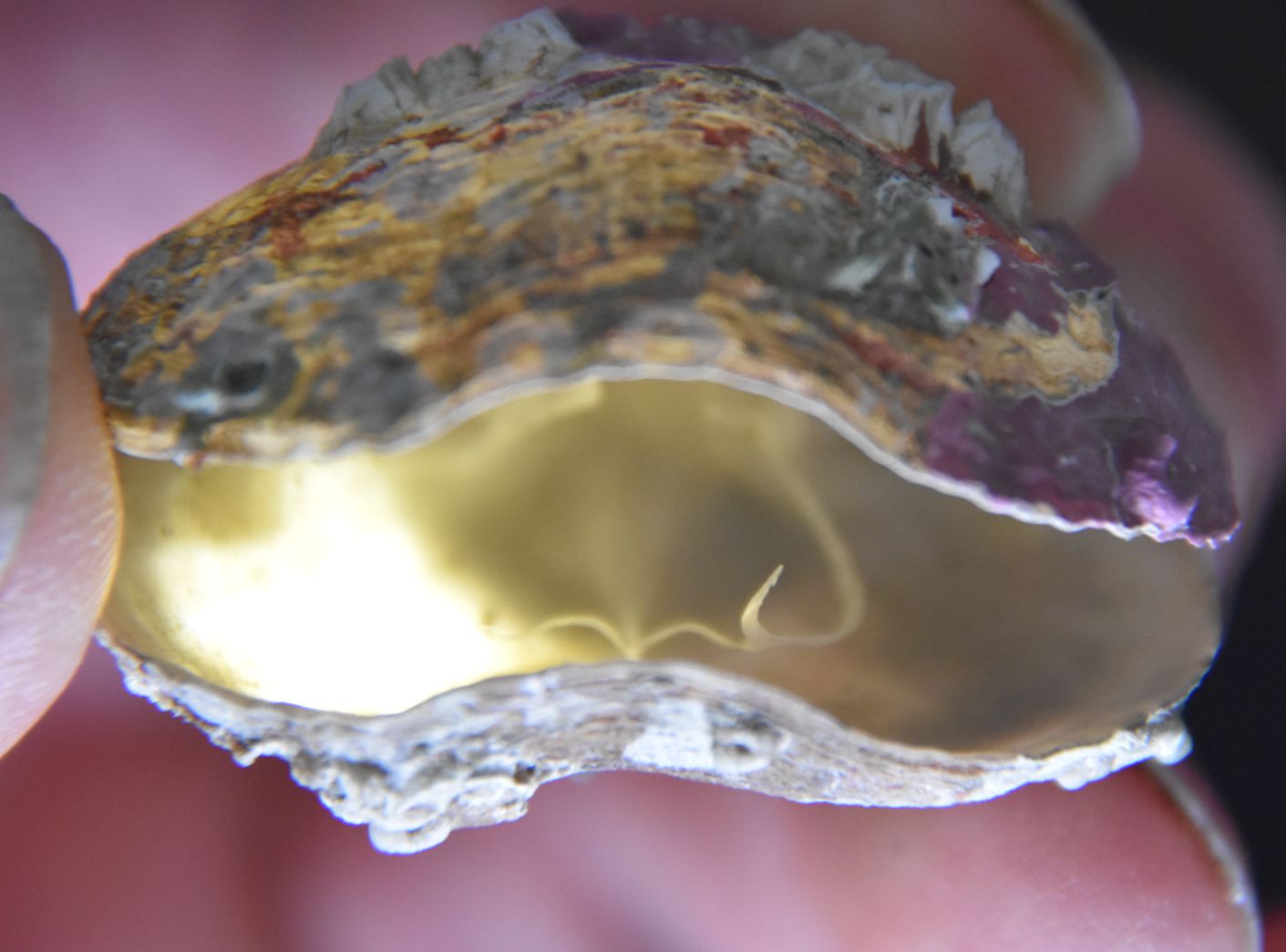
The set of brachial arms (brachidium) is a skeletal element which
supports
the lophophore.
It is very fragile and usually breaks free when the animal dies or is
disturbed.
This photo shows a mostly intact brachidium. Photo by Dave Cowles, July
2020
Authors and Editors of Page:
Anna Dyer (2002): Created original page
Edited by Hans Helmstetler 11-2002; Dave Cowles 2005-